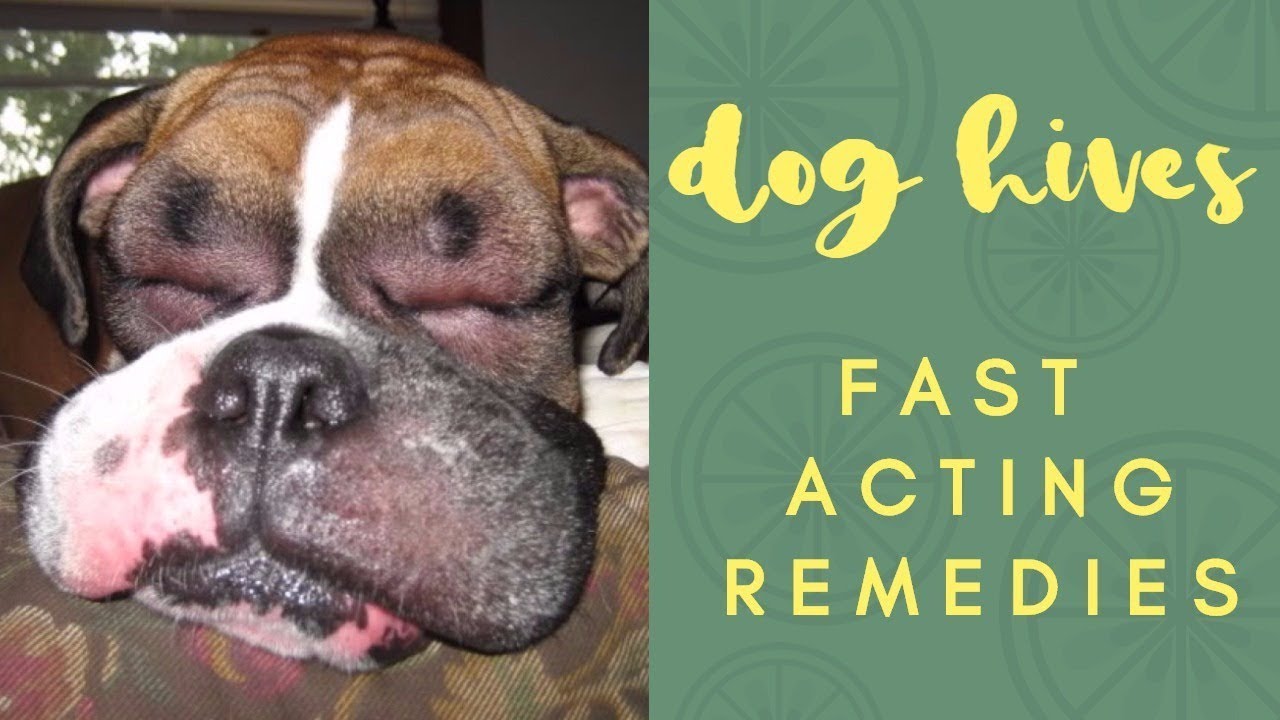Hives in Dogs: Understanding the Itchy Dilemma
Hives, those itchy and bothersome welts on your furry friend’s skin, can be a real challenge for both dogs and their owners. Just like in humans, hives in dogs are a common skin condition that can cause discomfort and distress. In this comprehensive guide, we’ll explore the world of “dogs with hives,” providing insights into the symptoms, causes, and effective treatments. By the end of this article, you’ll be well-equipped to help your canine companion find relief and live a more comfortable life.
Symptoms of Canine Hives
Deciphering the Telltale Signs of Hives in Dogs
Recognizing hives in dogs is the first step in addressing this prickly problem. These skin eruptions manifest as itchy, raised welts that often appear red and swollen. However, our canine companions can’t tell us when they’re uncomfortable, so it’s crucial to look out for signs of distress, such as constant scratching or restlessness. If you suspect your dog may have hives, keep an eye out for these key symptoms:

Itchy, Raised Welts:
Hives typically present as raised bumps on the skin that can vary in size and shape. They’re often surrounded by a reddish halo.
Redness and Swelling:
The affected areas of the skin may become noticeably red and swollen, indicating an inflammatory response.
Signs of Discomfort:
Dogs with hives may exhibit restlessness, excessive scratching, or even biting at the affected areas.
Causes of Hives in Dogs
Unraveling the Triggers Behind Canine Hives
Hives can appear suddenly and leave both you and your pup baffled. To effectively manage and prevent hives, it’s essential to identify their root causes. In dogs, hives often occur due to:
Allergies:
Just like humans, dogs can be allergic to various substances, including foods, insect stings, and environmental factors. Common allergens include pollen, certain plants, and even specific dog foods.
Medication Reactions:
Some medications may trigger allergic reactions in dogs, leading to the development of hives. If your dog has recently started a new medication, it’s essential to monitor their skin for any adverse reactions.
Stress and Anxiety:
Believe it or not, stress and anxiety can also manifest as hives in dogs. If your furry friend is going through a stressful period, such as moving to a new home or experiencing a change in routine, it could contribute to hives.
Diagnosis and Identifying Hives
Unveiling the Mystery: How Veterinarians Diagnose Canine Hives
When your furry friend is suffering from uncomfortable welts and itching, a timely and accurate diagnosis is essential. Veterinarians employ a combination of visual examination and medical history to diagnose hives in dogs. Here’s what you can expect during the diagnostic process:
Physical Examination:
The veterinarian will carefully examine your dog’s skin to identify the presence of hives and rule out other skin conditions with similar symptoms.
Medical History:
You’ll be asked about recent changes in your dog’s diet, medication, and environment. These insights can help pinpoint potential triggers.
Allergy Testing:
In some cases, allergy testing, such as skin tests or blood tests, may be recommended to determine specific allergens responsible for the hives.
Treatment Options
Easing the Itch: Effective Treatments for Canine Hives
Relief is on the horizon for dogs with hives. There are several treatment options available to alleviate their discomfort and help them recover. Depending on the severity of the hives and their underlying cause, your veterinarian may recommend one or more of the following treatments:
Antihistamines:
These medications help block the release of histamines, reducing itching and inflammation. Common antihistamines like Benadryl can provide relief for mild cases of hives.
Corticosteroids:
In more severe cases, corticosteroids may be prescribed to swiftly reduce inflammation and itching. These should only be used under veterinary supervision due to potential side effects.
Identifying and Eliminating Allergens:
If allergies are the root cause, identifying and eliminating the allergen from your dog’s environment or diet is crucial for long-term prevention.
Supportive Care:
Providing a comfortable environment, regular bathing with gentle, hypoallergenic shampoos, and ensuring your dog doesn’t scratch excessively are all part of supportive care.
Preventing Hives in Dogs
Shielding Your Canine Companion from Hives
Prevention is often the best remedy when it comes to hives in dogs. By taking proactive measures, you can reduce the likelihood of your furry friend experiencing discomfort. Here are some essential tips to prevent hives:
Identify Allergens:
If your dog has had hives before, work with your veterinarian to pinpoint the specific allergen responsible. Once identified, take steps to minimize your dog’s exposure.
Regular Grooming:
Keeping your dog’s coat clean and well-maintained can help prevent hives caused by contact with irritants. Regular baths with gentle, hypoallergenic shampoos are recommended.
Dietary Considerations:
If food allergies are suspected, consider switching to a hypoallergenic or prescription diet under the guidance of your veterinarian.
Insect Protection:
Use flea and tick preventatives to protect your dog from insect bites, which can trigger hives.
Stress Management:
Minimize stressors in your dog’s life through a stable routine, plenty of exercise, and positive reinforcement training.
Living with a Dog Prone to Hives
Navigating Life with a Hives-Prone Pup
If your dog is prone to hives, it’s essential to be prepared and proactive in managing their condition. Here are some strategies for living harmoniously with a hives-prone pup:
Regular Check-ups:
Schedule regular veterinary check-ups to monitor your dog’s skin health and discuss any changes or concerns.
Emergency Preparedness:
Keep antihistamines or prescribed medications on hand in case of hives flare-ups, especially if your dog has a known allergen.
Allergen-Free Environment:
Create an allergen-free zone within your home, minimizing potential triggers like dust mites, pollen, or certain plants.
Education:
Educate yourself about hives triggers and symptoms, so you can recognize and respond to them swiftly.
Positive Reinforcement:
Maintain a positive and stress-free environment for your pup to minimize anxiety-related hives.
Case Studies and Success Stories
Real-Life Triumphs Over Canine Hives
Reading about the experiences of other dog owners who have successfully managed their pets’ hives can provide both comfort and valuable insights. Here are a couple of real-life case studies that showcase triumph over canine hives:
Bella’s Battle with Food Allergies
Bella, a Labrador Retriever, developed hives due to a food allergy. Her owner diligently worked with a veterinarian to identify the allergen and switched to a hypoallergenic diet. Bella’s hives gradually disappeared, and she now enjoys a symptom-free life.
Max’s Stress-Induced Hives
Max, a Border Collie, experienced hives during periods of extreme stress. His owner focused on creating a calm environment, introduced stress-reduction techniques like regular exercise, and consulted a dog behaviorist. Max’s hives occurrences decreased significantly.
Expert Insights and Recommendations
Advice from the Pros: Managing Canine Hives Like a Pro
Veterinarians and experts in the field offer valuable recommendations for dog owners dealing with hives. Here are some expert insights to help you navigate this challenging condition:
Consult Your Veterinarian:
Always consult your veterinarian for a proper diagnosis and treatment plan tailored to your dog’s specific needs.
Medication Administration:
If prescribed medication, follow your vet’s instructions carefully, and never adjust the dosage without professional guidance.
Allergen Avoidance:
Work with your vet to identify and avoid allergens that trigger hives. This may involve dietary changes or environmental adjustments.
Stress Management:
Recognize the role of stress in hives development and take steps to minimize stressors in your dog’s life.
Regular Monitoring:
Keep a close eye on your dog’s skin condition, and report any changes to your veterinarian promptly.
FAQs dogs with hives
1. Q: What are hives in dogs?
A: Hives in dogs, medically known as urticaria, are itchy, raised welts on the skin caused by an allergic reaction.
2. Q: What do hives in dogs look like?
A: Canine hives appear as red, swollen, and raised bumps on the skin, often with a reddish halo.
3. Q: What are the common causes of hives in dogs?
A: Common causes of hives in dogs include allergies to food, insect stings, medications, and stress.
4. Q: Can hives in dogs be a sign of a severe allergic reaction?
A: Yes, in some cases, hives can be a sign of a severe allergic reaction called anaphylaxis, which requires immediate veterinary attention.
5. Q: How can I relieve my dog’s itching from hives at home?
A: You can relieve itching by giving your dog an antihistamine, like Benadryl, but consult your vet for the correct dosage.
6. Q: Are there any natural remedies for hives in dogs?
A: Natural remedies include oatmeal baths, cold compresses, and reducing exposure to allergens, but always consult your vet first.
7. Q: Should I take my dog to the vet for hives?
A: If your dog’s hives are severe, persist, or if there are signs of distress, consult your veterinarian for proper diagnosis and treatment.
8. Q: Can dogs develop chronic hives?
A: Yes, some dogs may develop chronic hives, which require ongoing management and identification of triggers.
9. Q: How can I prevent hives in my dog?
A: Prevent hives by identifying and avoiding allergens, using flea and tick preventatives, and managing your dog’s stress.
10. Q: Are there specific breeds more prone to hives?
A: While any breed can develop hives, some may be more prone due to genetic factors, but it can occur in any dog.
Conclusion:
In closing, understanding and addressing hives in dogs is crucial for their well-being. By recognizing the symptoms, identifying potential causes, and seeking professional guidance, you can help your furry friend find relief from this uncomfortable condition. Remember, each dog is unique, so a tailored approach, guided by your veterinarian, is key to successful management. With the right knowledge and a proactive mindset, you can ensure your dog lives a happier, itch-free life.




